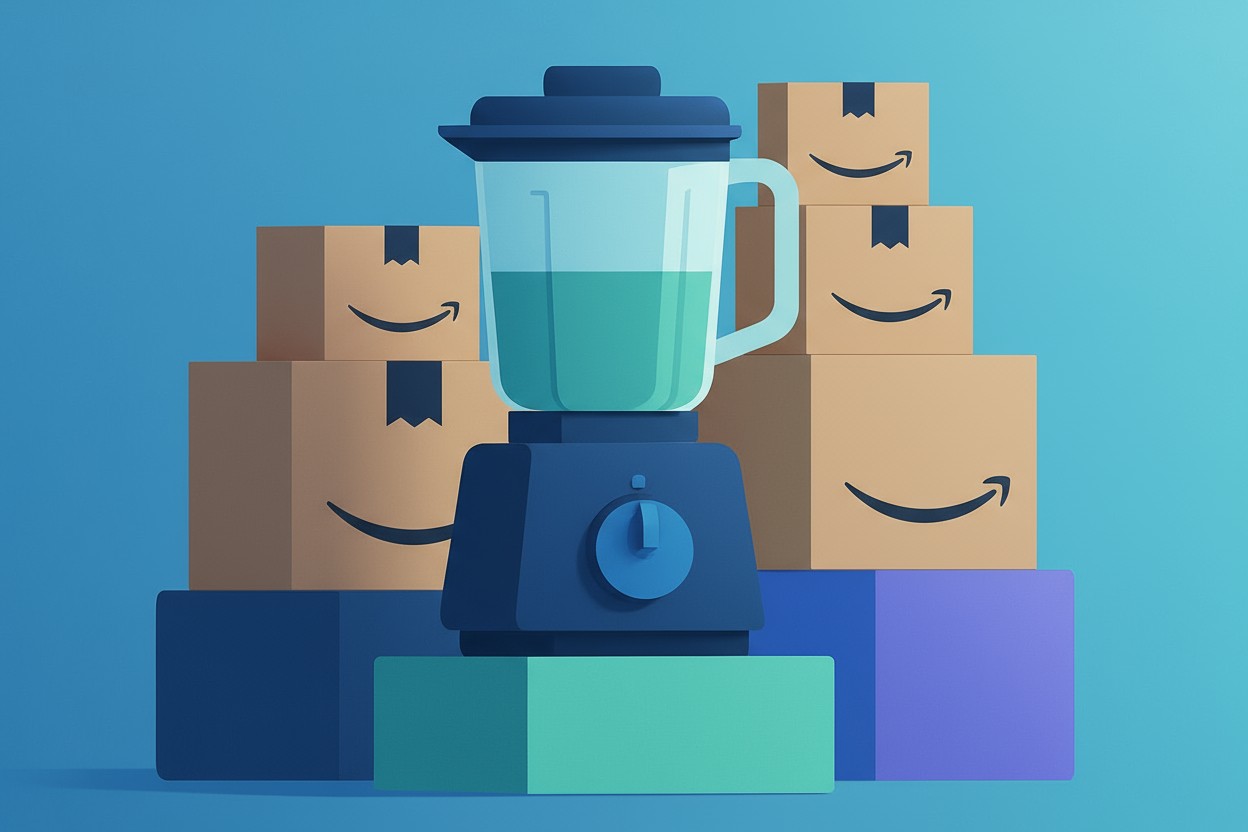

The Changing Landscape of Amazon Product Development
Most Amazon sellers are still using 2020 strategies in a 2025 world, chasing after fidget spinner variations or following outdated trends. The real winners are the ones engineering solutions with AI tools and systematic validation.
If you’re reading this, it’s time to ask yourself: Is your product idea good enough for 2025?
In this article, I’ll walk you through the exact framework to determine whether your Amazon product idea is worth pursuing or just another costly mistake.
Why Copying Products No Longer Work
Let’s get straight to the point: If you’re browsing Alibaba for trending products to copy and rebrand, you’re already five years behind.
The era of “find a trending product and slap your logo on it” is over.
Here’s why copying no longer works:
- Chinese imports are facing tariffs and regulatory challenges.
- Competition is fiercer than ever.
- Customer acquisition costs have skyrocketed by 300% in the past five years.
By playing the “copy game,” you’re competing on price alone - a race to the bottom with zero profit margins. The successful sellers in 2025 are those who anticipate market gaps and solve specific problems that haven't been addressed yet.

AI: The New Frontier in Product Discovery
Everyone’s talking about using ChatGPT for writing product listings, but the real revolution is happening in product discovery.
Smart sellers are leveraging AI tools to analyze:
- Search patterns
- Social media conversations
- Economic indicators
These tools predict what consumers will want in the next 3–6 months, far before trends hit the mainstream. Unlike basic keyword tools, AI helps sellers identify emerging micro-trends before competitors catch on.
For example, AI tools now scan product reviews, Reddit threads, and social media complaints to identify unmet needs. When thousands of people complain about the same issue with existing products, that’s a clear opportunity.
Where Do Successful Product Ideas Come From in 2025?
If copying isn’t the answer and AI is changing everything, where do the most successful product ideas actually come from?
- TikTok-to-Amazon Pipeline
This is more than just finding viral products. The key is understanding the problems behind trends. For example, when millions engage with ‘get ready with me’ videos, the opportunity isn’t just makeup products. It’s organizing systems, lighting solutions, and time-saving tools that tap into the core problems these trends represent.
- Subscription Box Intelligence
Subscription boxes are like curated market research. By analyzing what appears in multiple boxes, you can spot products with proven demand but low competition on Amazon. These are the hidden gems you can capitalize on.
- B2B Crossover Strategy
Some of the best-selling Amazon products are simplified versions of professional tools. Think about industrial-grade kitchen equipment scaled down for home cooks, or contractor tools reimagined for DIY enthusiasts. These types of products often tap into huge, untapped markets.

Identifying Profitable Opportunities in 2025
Not every problem is worth solving. But here are the pain points creating the most profitable opportunities in 2025:
- The Remote Work Ecosystem
While some companies are pushing return-to-office mandates, millions still work from home regularly. Products that solve remote work challenges beyond basic desk accessories continue to see strong demand.
- The Sustainability Paradox
Consumers increasingly want eco-friendly products but aren’t willing to sacrifice convenience. The most successful products in 2025 will balance genuine environmental benefits with ease of use.
- The Simplification Movement
As life becomes more complex, products that genuinely simplify daily tasks are commanding premium prices. These products are not just basic - they are thoughtfully designed solutions that eliminate friction.
- The Loneliness Epidemic
Products that help human connection or address social isolation are seeing unprecedented demand. This includes anything that makes people feel less alone - from apps to devices that foster community or communication.

The 2025 Product Validation Framework
To separate the winning ideas from the expensive failures, here’s the framework your product needs to pass before launching on Amazon:
1. Specific Audience Problem
Your product must solve a specific problem for a clearly defined audience that’s already spending money on inferior solutions. Solving your own problems isn’t enough - there needs to be a reachable, profitable market.
2. Clear Immediate Benefits
Don’t focus on features. Benefits sell. Your customers should understand the value of your product in seconds, not minutes. If you need to explain why they need it, you’ve already lost.
3. Intersection Opportunity
The best products sit at the intersection of multiple trends. Single-trend products are vulnerable to shifts in demand, but multi-trend products are more resilient and adaptable.
4. Supply Chain Feasibility
With tariffs and regulatory challenges, you need manufacturing flexibility. Can you source from multiple regions? For example, electronics from Vietnam, textiles from India, and fast delivery from Mexico.
5. Perfect is the Enemy of Profitable
Your product doesn’t need to be perfect to launch. It needs to be good enough to start and have a clear path for improvement based on customer feedback. By the time competitors catch up, you should be on version 3.0.

The Bottom Line: Innovate or Fade Away
Real innovation in 2025 isn’t about inventing entirely new products. It’s about strategic improvement:
Taking existing solutions and making them 10x better for a specific audience.
Combining features from multiple products into one thoughtful solution.
Removing complexity from overcomplicated products.
Adding intelligence to “dumb” products in ways that actually matter.
Successful Amazon sellers in 2025 will be the ones who continuously identify market gaps, validate ideas using AI, and rapidly iterate based on customer feedback.
Is Your Product Idea Good Enough for 2025?
If your product doesn’t solve a specific problem, offer clear benefits, sit at the intersection of multiple trends, have supply chain flexibility, and allow for rapid iteration, then the answer is no.
The Amazon marketplace has evolved. Success now requires systematic validation, not guesswork. Launching a product that doesn’t meet these criteria is the most expensive mistake you can make.
Article was originally published on 05 November, 2025




